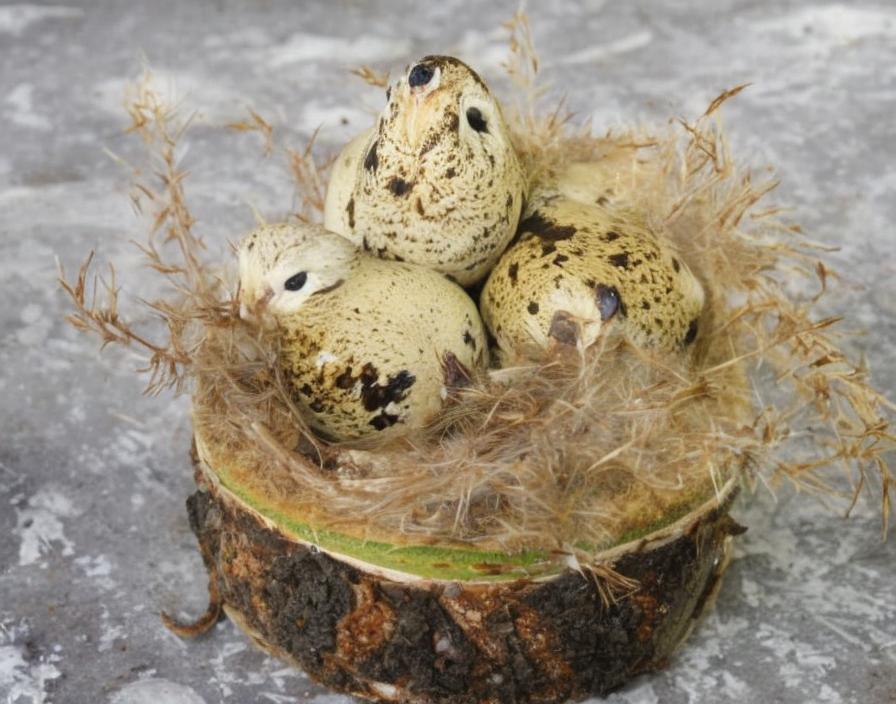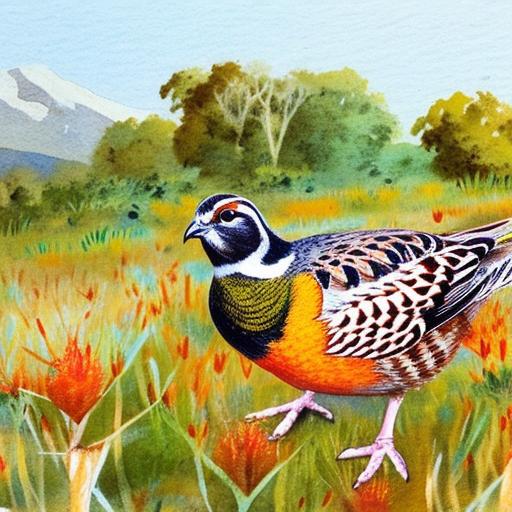Quail breeding is a rewarding and enjoyable endeavor for many people. Whether you are a hobbyist looking to raise quail for personal consumption or a commercial breeder aiming to supply the market with quail meat and eggs, understanding the basics of quail breeding is essential for success. Quail are small, ground-dwelling birds that are known for their fast growth and high reproductive rate, making them an attractive option for breeders. With the right knowledge and resources, quail breeding can be a relatively straightforward and profitable venture.
Quail breeding has been gaining popularity in recent years due to the increasing demand for quail products and the relatively low cost of raising quail compared to other livestock. Quail are also known for their adaptability to various environments, making them suitable for breeding in different climates and settings. Whether you are interested in raising quail for meat, eggs, or as pets, understanding the fundamentals of quail breeding is crucial for the health and success of your flock. In this comprehensive guide, we will explore the key aspects of quail breeding, including selecting the right quail species, setting up the breeding environment, understanding quail breeding behavior, managing breeding for optimal results, caring for quail chicks and juveniles, and troubleshooting common breeding issues.
Key Takeaways
- Quail breeding can be a rewarding and profitable venture for those interested in poultry farming.
- Selecting the right quail species for breeding is crucial for success, considering factors such as egg production, meat quality, and adaptability to the local environment.
- Setting up the quail breeding environment involves providing adequate space, proper lighting, ventilation, and temperature control.
- Understanding quail breeding behavior, including mating rituals, egg laying patterns, and brooding habits, is essential for successful breeding.
- Managing quail breeding for optimal results involves proper nutrition, disease prevention, and regular monitoring of egg production and hatch rates.
- Caring for quail chicks and juveniles requires providing a warm and safe environment, proper nutrition, and protection from predators.
- Troubleshooting common quail breeding issues such as low hatch rates, egg production problems, and disease outbreaks is essential for maintaining a successful breeding operation.
Selecting the Right Quail Species for Breeding
When it comes to quail breeding, selecting the right species is a critical first step. There are several species of quail that are commonly bred, each with its own unique characteristics and requirements. The most popular species for breeding include the Coturnix quail (also known as Japanese quail), Bobwhite quail, and California quail. Coturnix quail are highly favored for their fast growth, high egg production, and relatively docile nature, making them an ideal choice for both commercial and backyard breeders. Bobwhite quail are known for their excellent meat quality and are commonly bred for hunting purposes as well as for meat production. California quail, on the other hand, are often bred for their attractive plumage and are popular among aviculturalists and hobbyists.
When selecting the right quail species for breeding, it is important to consider your specific goals and resources. Factors such as available space, climate, market demand, and personal preferences should all be taken into account when choosing a quail species to breed. Additionally, it is essential to source your breeding stock from reputable breeders or suppliers to ensure the health and genetic quality of your flock. By carefully evaluating the characteristics and requirements of different quail species, you can make an informed decision that aligns with your breeding objectives and sets the foundation for a successful breeding program.
Setting Up the Quail Breeding Environment
Creating a suitable breeding environment is crucial for the health and productivity of your quail flock. The first step in setting up a quail breeding environment is to provide adequate housing that offers protection from predators, extreme weather conditions, and other potential threats. Quail housing can range from simple wire cages or pens to more elaborate aviaries or coops, depending on the scale of your breeding operation and the specific needs of your chosen quail species. It is important to ensure that the housing provides enough space for the quail to move around comfortably and includes nesting areas for breeding pairs or groups.
In addition to housing, the breeding environment should also include appropriate bedding material, such as straw or wood shavings, to provide a comfortable and hygienic living space for the quail. Access to clean water and a balanced diet is essential for the overall health and reproductive success of the birds. Depending on your breeding goals, you may need to provide specialized feed formulated for breeding quail, which typically contains higher levels of protein and essential nutrients to support egg production and chick development. Finally, ensuring proper lighting, ventilation, and sanitation in the breeding environment is essential for creating optimal conditions for successful quail breeding.
Understanding Quail Breeding Behavior
Understanding the natural behavior of quail is essential for successful breeding and flock management. Quail are social birds that thrive in small groups or pairs, and they have distinct mating rituals and behaviors that are important to observe and understand. In a breeding environment, male quail will often display courtship behavior such as strutting, calling, and offering food to females as part of their mating rituals. It is important to provide adequate space and privacy for breeding pairs or groups to engage in these natural behaviors without undue stress or competition.
Quail are also prolific egg layers, with females capable of laying an egg every day under optimal conditions. Understanding the egg-laying patterns and preferences of your quail can help you maximize egg production and fertility. Providing suitable nesting areas with comfortable bedding and privacy can encourage hens to lay eggs consistently and reduce the risk of egg-related issues such as breakage or poor hatchability. Additionally, observing the incubation behavior of broody hens or using artificial incubation methods can help ensure the successful development of quail eggs into healthy chicks.
By gaining insight into the natural behavior of quail and providing an environment that supports their social structure and reproductive instincts, breeders can enhance the overall well-being and productivity of their quail flock.
Managing Quail Breeding for Optimal Results
Managing quail breeding involves a combination of careful observation, record-keeping, and proactive intervention to ensure optimal results. Regular monitoring of breeding pairs or groups can help identify any issues or challenges that may arise, such as aggression, infertility, or health problems. By keeping detailed records of egg production, fertility rates, hatchability, and chick survival, breeders can track the performance of their flock over time and make informed decisions about breeding strategies and improvements to their management practices.
In addition to monitoring reproductive performance, managing quail breeding also involves implementing strategies to maintain genetic diversity and prevent inbreeding within the flock. Rotating breeding pairs or introducing new bloodlines from reputable sources can help prevent genetic stagnation and improve overall vigor and resilience in the offspring. Furthermore, managing factors such as lighting, temperature, nutrition, and disease prevention can have a significant impact on the success of quail breeding programs.
Another important aspect of managing quail breeding is planning for the long-term sustainability of the operation. This may involve developing a breeding schedule that takes into account seasonal variations in egg production, market demand for quail products, and the overall health and welfare of the flock. By implementing proactive management practices and adapting to changing circumstances, breeders can optimize their breeding programs for long-term success.
Caring for Quail Chicks and Juveniles

Caring for quail chicks and juveniles requires special attention to their unique needs and vulnerabilities during the early stages of development. Newly hatched quail chicks are fragile and require a warm, clean environment with access to fresh water and starter feed formulated specifically for young birds. Providing a brooder with a heat source such as a heat lamp or heating pad can help maintain the ideal temperature for young chicks, as well as protect them from drafts or temperature fluctuations.
In addition to providing essential nutrition and warmth, caring for quail chicks involves monitoring their health and behavior closely to identify any signs of illness or distress. Common issues such as pasty butt (a condition where droppings stick to the chick’s vent) or leg deformities may occur in young quail and require prompt intervention to prevent further complications. Regular handling and gentle socialization can help young quail become more accustomed to human interaction, which can be beneficial for reducing stress and improving their overall welfare.
As quail chicks mature into juveniles, they will require additional space and enrichment to support their natural behaviors and physical development. Providing access to outdoor areas or larger enclosures can allow young quail to explore their surroundings, engage in dust bathing, and exhibit natural behaviors such as foraging and socializing with their peers. By providing a nurturing environment that meets the specific needs of growing quail, breeders can support their healthy development into productive members of the flock.
Troubleshooting Common Quail Breeding Issues
Despite careful planning and management, quail breeders may encounter various challenges and issues during the breeding process. Common problems such as low fertility rates, poor hatchability, aggressive behavior, or disease outbreaks can impact the success of a breeding program if not addressed promptly and effectively. Troubleshooting these issues requires a systematic approach that involves identifying potential causes, implementing targeted interventions, and seeking professional advice when necessary.
Low fertility rates in quail can be caused by factors such as inadequate nutrition, stress, age-related decline in reproductive performance, or genetic issues within the flock. By evaluating the diet, environmental conditions, and overall health of the birds, breeders can take steps to improve fertility rates through adjustments in management practices or supplementation with essential nutrients.
Poor hatchability of quail eggs may be attributed to factors such as improper incubation conditions, egg handling practices, or genetic abnormalities. Ensuring that eggs are collected promptly, stored properly before incubation, and subjected to consistent temperature and humidity levels during incubation can help improve hatchability rates. Additionally, conducting regular fertility checks on eggs before setting them in the incubator can help identify potential issues early on.
Aggressive behavior among quail can lead to injuries, stress, and reduced reproductive success within the flock. Identifying the underlying causes of aggression, such as overcrowding, inadequate resources, or social dynamics within the group, can help breeders implement strategies to reduce conflict and promote harmonious interactions among the birds.
Disease outbreaks pose a significant threat to quail breeding operations and require immediate attention from experienced professionals in avian health. Implementing biosecurity measures such as quarantine protocols for new birds, regular sanitation of equipment and facilities, and monitoring for signs of illness can help prevent disease spread within the flock.
In conclusion, successful quail breeding requires a combination of knowledge, dedication, and proactive management practices to ensure the health and productivity of the flock. By selecting the right quail species for breeding, creating a suitable breeding environment, understanding quail behavior, managing breeding for optimal results, caring for young birds, and addressing common issues effectively, breeders can establish thriving quail breeding programs that meet their goals and contribute to the sustainable production of quail products.
If you’re interested in quail breeding, you may also want to check out Poultry Wizard’s article on duck mating season. Understanding the mating season of ducks can provide valuable insights into the breeding habits of various poultry species, including quails. Learning about different mating seasons can help poultry enthusiasts develop a comprehensive understanding of breeding practices and enhance their overall knowledge of raising and caring for birds.
FAQs
What is quail breeding?
Quail breeding refers to the process of raising and breeding quail for various purposes, such as meat and egg production, as well as for ornamental and hobbyist purposes.
What are the different types of quail breeds used for breeding?
There are several different quail breeds that are commonly used for breeding, including the Coturnix quail (also known as Japanese quail), Bobwhite quail, and Gambel’s quail, among others.
What are the basic requirements for quail breeding?
Basic requirements for quail breeding include suitable housing, proper nutrition, adequate space, and appropriate environmental conditions. It is important to provide a clean and comfortable living environment for the quail to thrive and reproduce.
What is the breeding season for quail?
Quail breeding season typically occurs in the spring and summer months, although some quail breeds may breed year-round in suitable conditions. It is important to provide the right conditions and stimuli to encourage breeding behavior in quail.
How long does it take for quail eggs to hatch?
Quail eggs typically take around 17 to 18 days to hatch, although this can vary slightly depending on the specific quail breed and environmental conditions.
What are some common challenges in quail breeding?
Common challenges in quail breeding include maintaining optimal environmental conditions, preventing diseases and parasites, and managing breeding ratios to ensure successful reproduction. It is important to have a good understanding of quail behavior and biology to address these challenges effectively.
Meet Walter, the feathered-friend fanatic of Florida! Nestled in the sunshine state, Walter struts through life with his feathered companions, clucking his way to happiness. With a coop that’s fancier than a five-star hotel, he’s the Don Juan of the chicken world. When he’s not teaching his hens to do the cha-cha, you’ll find him in a heated debate with his prized rooster, Sir Clucks-a-Lot. Walter’s poultry passion is no yolk; he’s the sunny-side-up guy you never knew you needed in your flock of friends!







